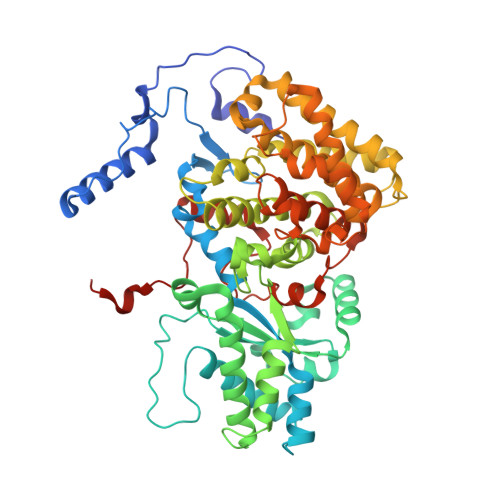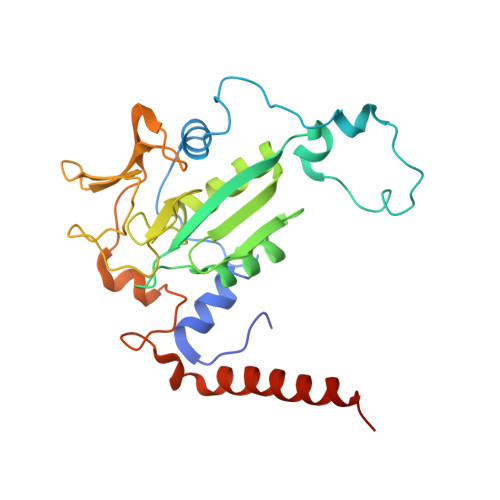Comparison of Three Methyl-Coenzyme M Reductases from Phylogenetically Distant Organisms: Unusual Amino Acid Modification, Conservation and Adaptation
Grabarse, W., Mahlert, F., Shima, S., Thauer, R.K., Ermler, U.(2000) J Mol Biol 303: 329
- PubMed: 11023796
- DOI: https://doi.org/10.1006/jmbi.2000.4136
- Primary Citation of Related Structures:
1E6V, 1E6Y - PubMed Abstract:
The nickel enzyme methyl-coenzyme M reductase (MCR) catalyzes the terminal step of methane formation in the energy metabolism of all methanogenic archaea. In this reaction methyl-coenzyme M and coenzyme B are converted to methane and the heterodisulfide of coenzyme M and coenzyme B. The crystal structures of methyl-coenzyme M reductase from Methanosarcina barkeri (growth temperature optimum, 37 degrees C) and Methanopyrus kandleri (growth temperature optimum, 98 degrees C) were determined and compared with the known structure of MCR from Methanobacterium thermoautotrophicum (growth temperature optimum, 65 degrees C). The active sites of MCR from M. barkeri and M. kandleri were almost identical to that of M. thermoautotrophicum and predominantly occupied by coenzyme M and coenzyme B. The electron density at 1.6 A resolution of the M. barkeri enzyme revealed that four of the five modified amino acid residues of MCR from M. thermoautotrophicum, namely a thiopeptide, an S-methylcysteine, a 1-N-methylhistidine and a 5-methylarginine were also present. Analysis of the environment of the unusual amino acid residues near the active site indicates that some of the modifications may be required for the enzyme to be catalytically effective. In M. thermoautotrophicum and M. kandleri high temperature adaptation is coupled with increasing intracellular concentrations of lyotropic salts. This was reflected in a higher fraction of glutamate residues at the protein surface of the thermophilic enzymes adapted to high intracellular salt concentrations.
Organizational Affiliation:
Max-Planck-Institut für Biophysik, Heinrich-Hoffmann-Strasse 7, 60528 Frankfurt, Germany.



















